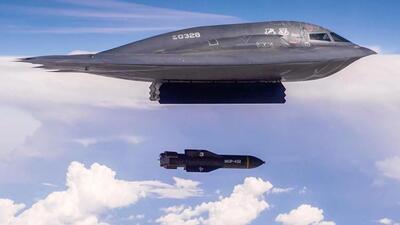
| Published June 28, 2025
In a move that’s being called both “bone-crushing” and “reckless,” U.S. Senator Lindsey Graham has dropped a legislative bombshell aimed at some of the world’s biggest economies. His proposed “Sanctioning Russia Act of 2025” would slap a jaw-dropping 500% tariff on imports from any country that continues to buy oil, gas, or uranium from Russia. The message is unmistakable: Stop funding Moscow, or pay dearly.
But inside the corridors of Washington, alarm bells are ringing—not in Moscow, Beijing, or New Delhi, but right at home.
A Tariff Designed for Shock and Awe
Dubbed an “economic bunker buster,” Graham’s bill isn’t subtle. It’s designed to economically punish nations like China and India, which have increased energy purchases from Russia since the Ukraine conflict began.
The senator’s aim is to cut off Russia’s energy revenue stream by weaponizing U.S. trade leverage. “If you’re still buying Russian fuel, you’re fueling Putin’s war,” Graham said bluntly on the Senate floor. “And you shouldn’t have access to our markets.”
The White House Hits the Brakes
While the legislation grabs headlines, the Biden administration is pumping the brakes behind the scenes. Officials fear the bill, as written, could derail sensitive trade talks with Asia’s biggest players and throw global supply chains into chaos. A 500% tariff on imports from China and India? That’s not just a slap—it’s a global economic earthquake.
According to reports, the administration is lobbying to change the bill’s language from “shall impose” to “may impose”, giving the president discretion rather than obligation. There’s even talk of carve-outs for countries aiding Ukraine, giving allies like India a way out.
Former President Donald Trump has also weighed in, warning that “sanctions cost us a lot of money” and risk undermining larger strategic deals, especially with Beijing.
Trade Wars, Round Two?
To critics, this proposal risks triggering a new round of trade wars, something the U.S. economy can ill afford. After years of inflation and ongoing disruptions from the pandemic, America’s industrial base and consumer markets remain fragile.
Imposing blanket tariffs on strategic trade partners could backfire. China remains one of the U.S.’s largest import sources. India, meanwhile, is viewed as a key counterbalance to China in Asia. Angering both simultaneously could push them closer to Russia, precisely what Washington wants to avoid.
Strategic Sabotage or Smart Diplomacy?
Supporters of the bill argue that half-measures won’t deter Russia, and that the U.S. needs to show strength—even at economic cost. “This is a moral line in the sand,” said one Senate aide. “If we’re serious about stopping the war machine, we have to take away its fuel.”
But for now, the consensus in Washington leans toward caution. A diplomatic version of the bill—with exemptions and flexible enforcement—appears more likely than an all-out trade bombshell.
What’s Next?
The legislation remains in flux, and key details—like whether the tariffs will be automatic or discretionary—could determine its fate.
-
If passed as written, expect economic and political turbulence.
-
If toned down, it may become a tool for selective pressure—used more as a threat than a hammer.
Either way, the U.S. is sending a clear signal to nations still doing business with Moscow: The cost of neutrality in global conflicts is rising.
 Resulting Effects
Resulting Effects
🔥 Economic Effects
1. Global Trade Disruption
-
The bill threatens to disrupt $100s of billions in trade, especially with China and India, two of America’s top trading partners.
-
U.S. companies reliant on low-cost imports—like tech, pharmaceuticals, textiles, and raw materials—could face surging costs.
2. Inflation Spike
-
Tariffs this steep would likely lead to higher prices for U.S. consumers, exacerbating inflation.
-
Products ranging from electronics to clothing could see price hikes, disproportionately affecting low-income households.
3. Retaliatory Measures
-
China and India may respond with counter-tariffs on U.S. goods—hurting American farmers, tech exporters, and manufacturers.
🌐 Geopolitical Fallout
4. Strained Alliances
-
India, seen as a U.S. ally in balancing China’s influence, may feel betrayed if sanctioned, pushing it closer to Russia or China.
-
Other neutral countries might see the U.S. as overreaching, risking diplomatic isolation on this issue.
5. Weakened Coalition on Ukraine
-
Rather than uniting nations against Russia, the move may fracture support—especially among Global South countries who prioritize cheap energy over sanctions.
🏛️ Domestic Political Impact
6. Internal Divisions
-
The tariff bill is sparking partisan divides in Washington:
-
Hawks favor tough action to hurt Russia.
-
Moderates and free-trade advocates fear blowback to U.S. economic interests.
-
7. Business Backlash
-
Corporate America—especially import-heavy sectors like retail, tech, and automotive—could lobby hard against the bill, citing job losses and supply chain risks.
🧭 Strategic Shifts
8. Realignment of Global Energy Markets
-
Countries may increasingly adopt non-dollar trade systems or regional currency swaps to sidestep U.S. financial dominance.
-
This could accelerate de-dollarization, weakening the dollar’s global reserve status over time.
9. Emergence of Alternative Blocs
-
Tariffs and sanctions could further push BRICS+ nations to strengthen their own independent trade networks, challenging U.S.-led globalization.
 Bottom Line:
Bottom Line:
In the end, while some in Congress are eager to unleash sweeping economic warfare, President Trump’s instinct for restraint may prove wiser. He has long warned that broad sanctions often backfire, costing American consumers and businesses more than they hurt foreign regimes. His approach—tough when necessary, but smart in execution—favors direct deals, strategic leverage, and putting America’s economic interests first.





Be the first to comment